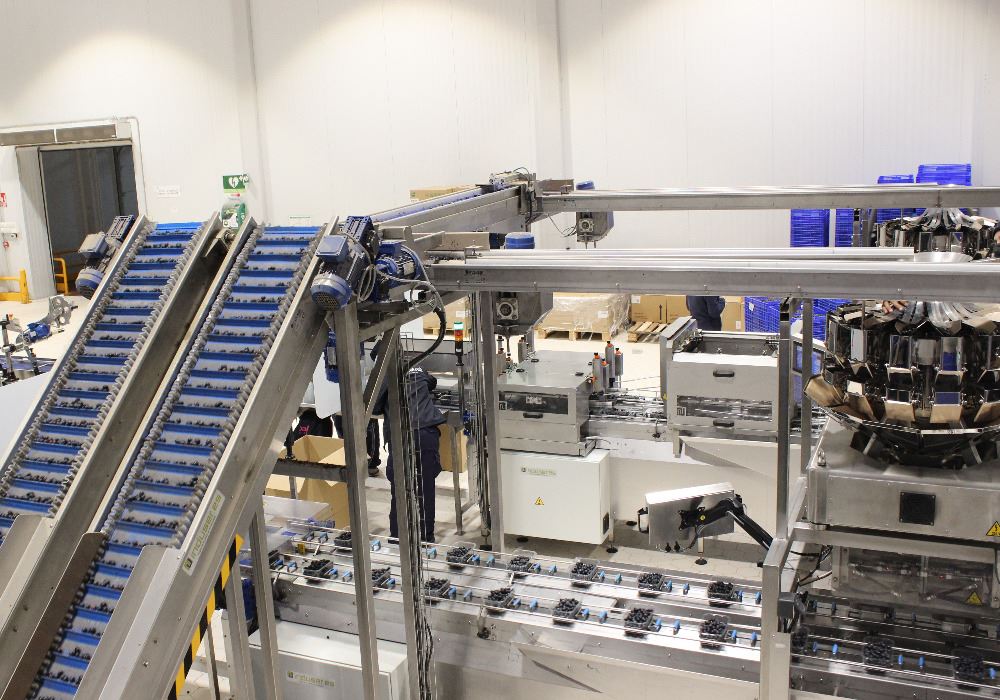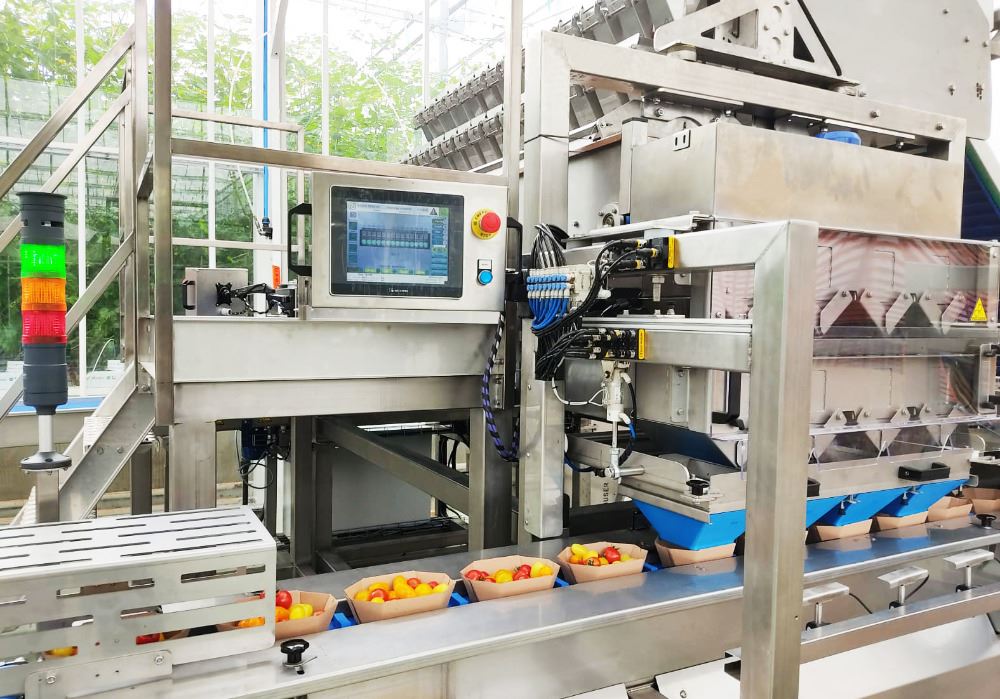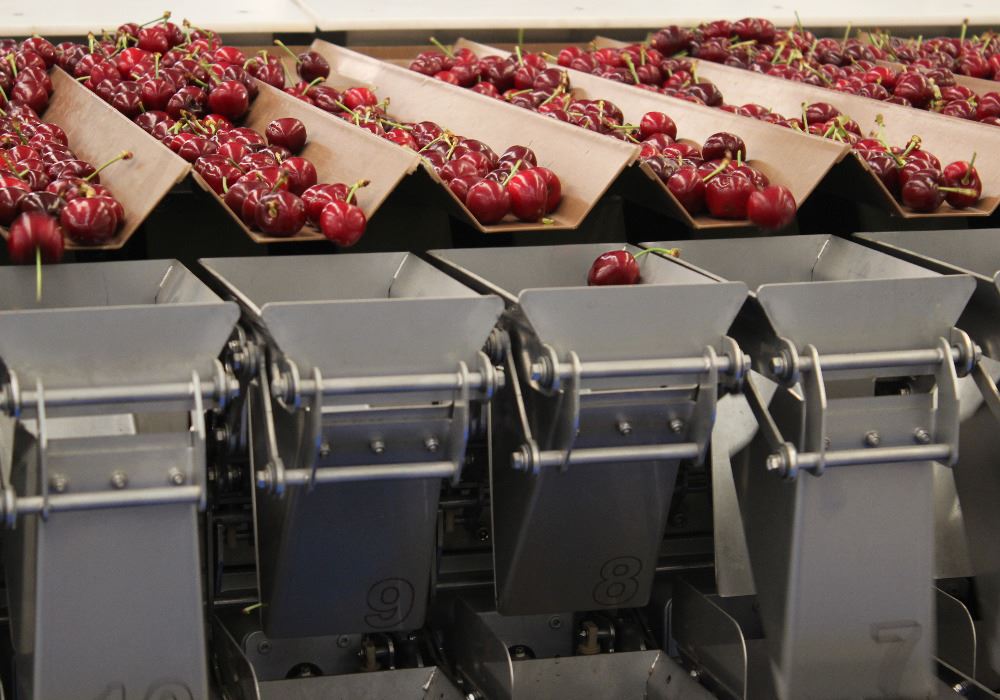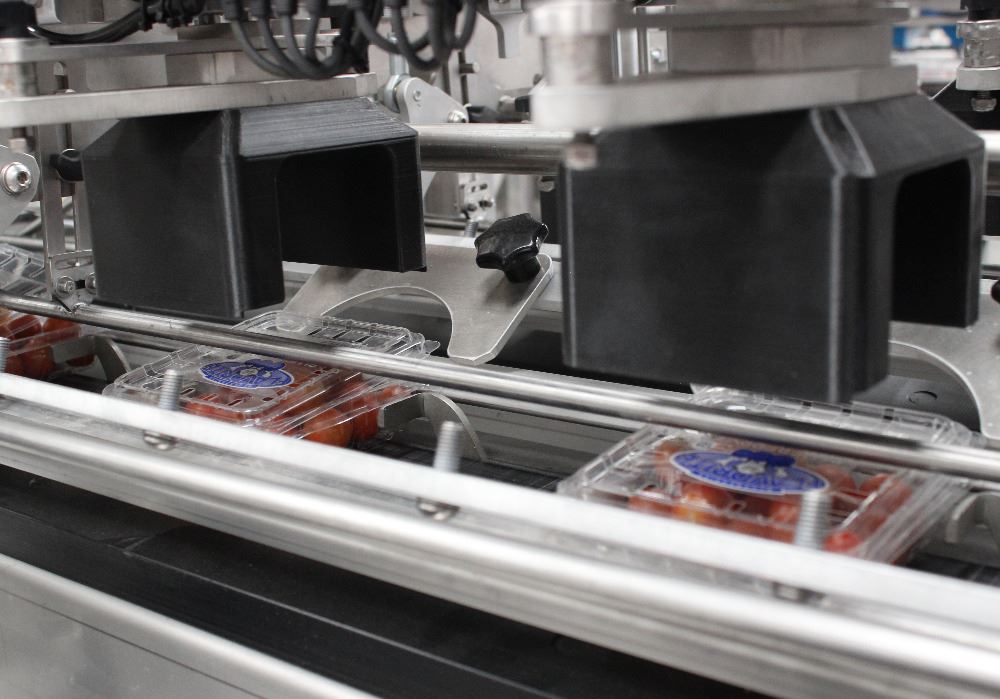On the 19th anniversary of the founding of INDSER, we share an article in which we explain what the packaging lines we design and manufacture for the fruit and vegetable sector are for.
April 17th, 2023
INDUSER's competitive advantages.
Te lo respondemos con
este artículo que tiene por objetivo recordarte que seremos un aliado ideal para emprender tu próximo proyecto de envasado.They frequently ask: "What is a packaging line for? What advantages does investing in this type of machinery bring to my business?". We reply with this article that aims to remind you that we will be an ideal ally to undertake your next packaging project.
1| It serves to optimize your production.
In the first place, a packaging line is a chain machinery installation, through which one or several products pass, until reaching a specific production objective. In our projects -which specialize in fruit and vegetable products- the clients are the ones who tell us how many tons will need to be packaged each day, and we, the ones who put ingenuity at the service of achieving their commercial commitments.

2| It serves to guarantee quality, flavor and freshness.
Secondly, a packaging line serves to guarantee the treatment delicate condition of your products from the beginning to the end of their journey through the machinery. Blueberries, cherries, cherry tomatoes, stone fruit, apples, peppers, lettuce or IV range... since 2004 we have evolved our designs to ensure that quality, flavor and freshness are preserved, until it reaches the hands of the final consumer.

3| It serves to reduce human mistakes.
In third place, neither grams of more, nor grams of less. We know that being precise in the individual container weight is decisive for the growth of your business. How many grams should each tray weigh? 150, 250, 500 grams? Mahcines like the associative weighers -which are integrated into the first part of the line- make a series of sensors associate the different weights of the heads until they combine with the weight configured as the target. On the other hand, this type of technology allows the hands of people who used to weigh and tare a scale, can be used in other phases of your campaign.

4|A packaging line serves to automate processes.
Fourthly, we focus on mechanics and automation to achieve continuous, constant and safe production. The packaging machines of our lines -which are integrated after the associative weighing- automate the denesting of the trays and later, they fill the product. Depending on the container format used, you can incorporate the closure of clamshell-type tubs, or even the lid.

5| A packaging is for maintaining the quality standards in each package.
Fifth, the machines that are integrated at the end of the packaging line ensure that market quality standards are met. From weight control, which is used for internal quality control, to labeling modules and metal detectors, which ensure the regulations that must be met for consumption by the end customer.
In summary…
Investing in an INDUSER packaging line is providing your business with a series of advantages that will allow you to better organize your production, meet your commercial commitments, guarantee the flavor and freshness of products as delicate as fruits and vegetables, reorganize human work towards other areas of your business, and comply with the regulations of quality of your business
We understand that for you, who are in the process of investing in a new packaging line, it is important to know references, understand a little better how our machines work, or simply understand what a packaging line of our brand looks like.
Click on the selection below, to see different Case Studies in action:
1 | A case study for tomatoes.
2 | A case study for blueberries.
3 | A case study for cherries.
4 | A case for citrics.
5 | A case study for apricots.

